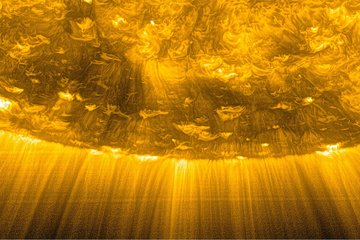Single-station seismic noise analysis in preparation of the InSight SEIS installation on Mars
The InSight mission to Mars, scheduled for launch in 2016, will place a very broad-band seismic sensor (SEIS) on the surface of the planet. MPS is contributing to the SEIS project by developing and building the leveling system for the seismometer.
In the absence of actual ground truth data, current estimates of seismic activity on Mars are based on fault mapping, surface dating, and assumptions about the annual seismic moment release. In the resulting range of possible scenarios, observable seismicity is likely considerably less abundant than on Earth. In order to make the best use of all available seismic data, the information contained in the seismograms recorded between events must thus also be considered.
The envisaged PhD thesis topic is to further develop and implement single-station seismic ambient vibration analysis to infer information on crustal structure and surface processes. Potential lines of investigation include the extraction of reflected body waves from noise autocorrelations, measuring shallow velocity variations related to temperature changes or tides in single-station noise cross-correlations, and spectral analysis of ambient vibrations. These methods could be used to answer important questions on the thickness of the Martian crust, the evolution of the northern lowland plains, and the mechanical properties of the shallow subsurface at the landing site. Algorithms can be tested on suitable Earth data, data from the Apollo lunar seismic network, synthetic Mars seismograms developed by the project team, and potentially with SEIS data from the early stage of the InSight mission.











